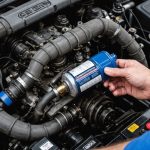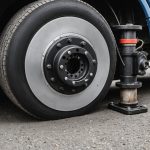Understanding VAT on Business Vehicle Purchases in the UK
Navigating the world of Value Added Tax (VAT) can be a maze for businesses, especially when considering business vehicles. In the UK, VAT is a crucial aspect of purchasing vehicles for business use. Understanding how it applies can make a substantial difference in financial planning.
VAT is a consumption tax that businesses must account for when acquiring vehicles. The current rate applicable on business vehicles in the UK stands at 20%. This means that when businesses purchase vehicles, they need to factor in this additional cost. However, the ability to reclaim this tax is a key benefit if the vehicle is used exclusively for business purposes.
Topic to read : Ultimate Guide to Preparing Your Vehicle for an Epic Road Trip from the UK to Europe
For a business to reclaim VAT on vehicle purchases, it must first ensure it is VAT registered. Registration is obligatory for businesses whose taxable turnover exceeds a certain threshold. Upon registration, businesses can offset VAT paid on vehicle purchases against VAT received on business transactions. This mechanism is vital for financial efficiency.
In conclusion, familiarising oneself with VAT regulations, especially pertaining to business vehicles, is essential. Businesses stand to gain significantly through effective VAT management, making registration an important step in prudent fiscal governance.
Also to read : Ultimate Guide to Discovering and Installing the Top Vehicle Security Systems in the UK
Eligibility Criteria for VAT Claims
Navigating the eligibility criteria for VAT claims can be complex, especially when it involves business vehicles. Understanding the types of vehicles that qualify for VAT claims is crucial for a smooth claiming process. Typically, the vehicles primarily used for business purposes are eligible. This means if a vehicle is used more than 50% of the time for business activities, it falls in the acceptable category.
Sole Trader vs. Limited Company Eligibility
Different business structures have varying rules. As a sole trader, claiming VAT can be straightforward, provided the vehicle is predominantly used for business. However, for a limited company, the documentation required is often more comprehensive to avoid VAT-related issues.
Scenarios of Disallowed VAT Claims
There are scenarios where VAT claims on business vehicles may be disallowed. If a vehicle is used for significant personal use, even occasionally, it may lose its eligibility status. Additionally, vehicles intended for resale or leasing often do not qualify for VAT claims. It’s also important to note that input VAT cannot be claimed on some cars unless specific conditions, such as pool cars, are met.
Being informed and prepared can minimise potential pitfalls in VAT claims for business vehicles.
The Process of Claiming VAT on Vehicle Purchases
Claiming VAT on vehicle purchases can be streamlined by following a step-by-step process. This section explores the key components of this process.
Required Documentation
An essential part of claiming VAT is having the correct documentation. Necessary invoices and receipts are crucial for VAT claims, ensuring each transaction is validated against HMRC standards. The importance of maintaining detailed records cannot be overstated. Providing clear and accurate data helps verify claims, reducing the risk of errors. Both digital and paper documentation have their pros and cons. Digitally stored records save space and are easily accessible but require backup. Paper records are tangible but can be easily misplaced.
Completing VAT Returns
When completing VAT returns, correct reporting of vehicle purchase VAT is vital. Incorrect entries are common errors that should be avoided. Always double-check figures to ensure accuracy. Be mindful of deadline considerations to avoid penalties. Submitting VAT claims on time is as important as accuracy.
Involvement of Accountants or Tax Advisors
Professional advice can significantly benefit VAT claims. Accountants or tax advisors offer expertise that can prevent costly mistakes. Consider hiring a professional if you lack the time or knowledge to manage claims independently. A cost versus benefit analysis can help determine whether professional help is justified, balancing expenditure with the potential savings and peace of mind they provide.
Common Pitfalls in VAT Claiming Process
When it comes to VAT claims, avoiding mistakes is crucial. Errors in this process can lead to costly consequences. One common pitfall is neglecting to retain accurate documentation. This can result in discrepancies and possible penalties. Ensuring you keep all receipts and invoices is essential for accurate reporting.
Misclassification of expenses often leads to incorrect VAT claims. Categorising non-deductible expenses as VAT-deductible can trigger audits and penalties. Understanding what qualifies as a deductible expense is fundamental.
Another frequent error is submitting claims without reviewing your records for errors. Mistakes in calculations or misreported figures can lead to underpayment or penalties for over-claims.
To avoid these mistakes, adhere to best practices in VAT portfolio management. Regular scrutiny of your financial records and staying informed on updated VAT regulations can help prevent these errors. It’s advisable to employ digital solutions for tracking expenses and claims efficiently. Software tools can mitigate human error and streamline the overall process.
In summary, awareness of these pitfalls is the first step towards error-free VAT reporting. Implementing a structured approach to VAT claims not only ensures compliance but also safeguards your business from unnecessary fines and disputes.
Recent Changes to VAT Regulations and Compliance
Recent updates to VAT regulations in the UK have profoundly impacted many sectors, most notably vehicle VAT. These changes can significantly alter the way businesses approach their VAT claim processes, essentially requiring them to reassess and adjust to new compliance standards.
Impact on Vehicle VAT
The latest updates have introduced modifications that affect how VAT is applied and reclaimed for vehicles. For instance, businesses may now need to provide more detailed documentation to substantiate their claims, directly influencing the claim processes. This change means companies must be more meticulous in their bookkeeping and ensure all records align with the new regulations.
Compliance with New VAT Rules
Ensuring compliance has become more critical as non-conformity can lead to stringent penalties. Non-compliance under the updated rules might result in fines or audits, adding to the burden on businesses. It is crucial for businesses to stay informed about these changes and implement the necessary systems to comply with the regulations.
Adapting to these changes not only safeguards businesses from potential penalties but also streamlines their VAT processing, fostering a smoother financial operation. Ensuring thorough understanding and application of these new regulations is key to maintaining compliance and avoiding adverse consequences.
Case Studies and Practical Examples
Understanding the nuances of VAT claims can be greatly enhanced through case studies. By examining real-life examples where businesses successfully navigated VAT claims, individuals can gain invaluable insights.
One exemplary scenario involved a small tech company that recouped significant VAT from international transactions. By meticulously documenting their cross-border sales and maintaining detailed invoices, they managed to navigate the complexities of VAT refund protocols, showcasing the importance of proper documentation.
On the flip side, analyzing a failed claim offers crucial lessons. Consider a retail venture that attempted a VAT claim without understanding their eligibility fully. Their oversight in discriminating between zero-rated and standard-rated supplies resulted in a rejection. This highlights the vitality of being vigilant about the types of transactions that qualify for VAT reimbursement.
When examining different business structures, a sole proprietorship and a limited company may encounter varied VAT outcomes. Sole proprietorships often manage VAT on a straightforward cash basis, but limited companies may benefit from more intricate VAT strategies due to their larger turnover and diverse transactions.
These examples emphasize two key points: understanding the specific regulations surrounding VAT for your business type and ensuring thorough record-keeping practices are pivotal for maximizing VAT reclaim success.
FAQs About VAT on Business Vehicle Purchases
Navigating Value Added Tax (VAT) on business vehicle purchases can be complex, prompting many frequently asked questions. Let’s clarify some common queries:
What vehicles can reclaim VAT?
Only vehicles used solely for business purposes qualify for VAT reclamation. This excludes cars for personal use, unless special exemptions apply, such as taxis or self-drive hire vehicles.
How much VAT can be reclaimed?
Typically, businesses can reclaim the full 20% VAT on eligible purchases. However, businesses must ensure proper documentation, such as invoices, to substantiate VAT claims.
What should I do if my claim is rejected?
If a VAT claim is rejected, review the claim to ensure eligibility criteria were met. Incorrect paperwork is a common issue. Consulting a VAT specialist might help in such scenarios.
Resources for further guidance
Several resources provide in-depth information about VAT on vehicles. HMRC’s official guidelines offer comprehensive advice tailored for UK businesses. It’s crucial to stay updated with any changes in tax regulations to avoid compliance issues. Additionally, participating in workshops or joining trade organisations can offer peer support and practical insights.
Understanding these FAQs can empower business owners to make informed decisions, optimize their tax benefits, and maintain financial compliance.











